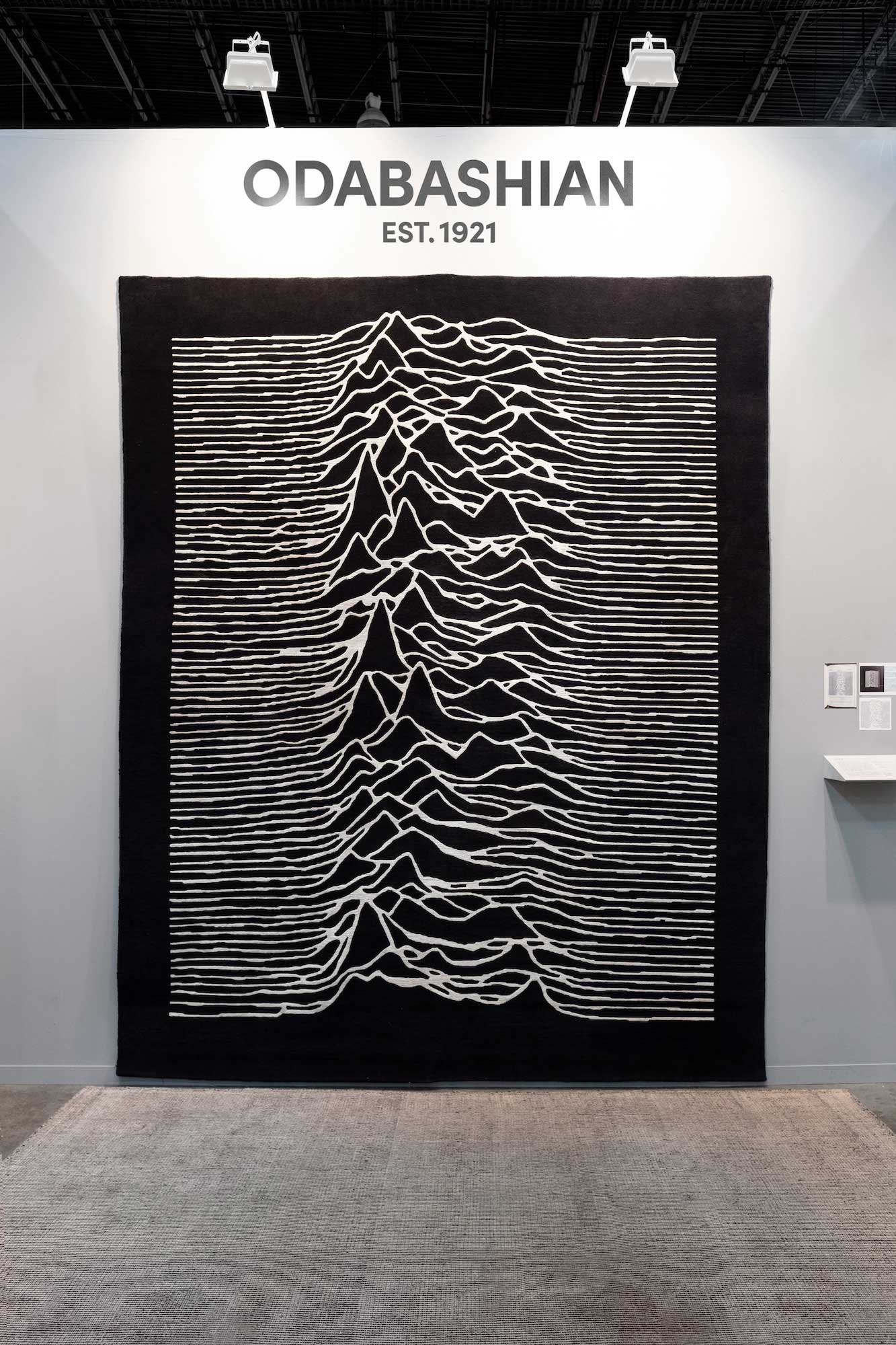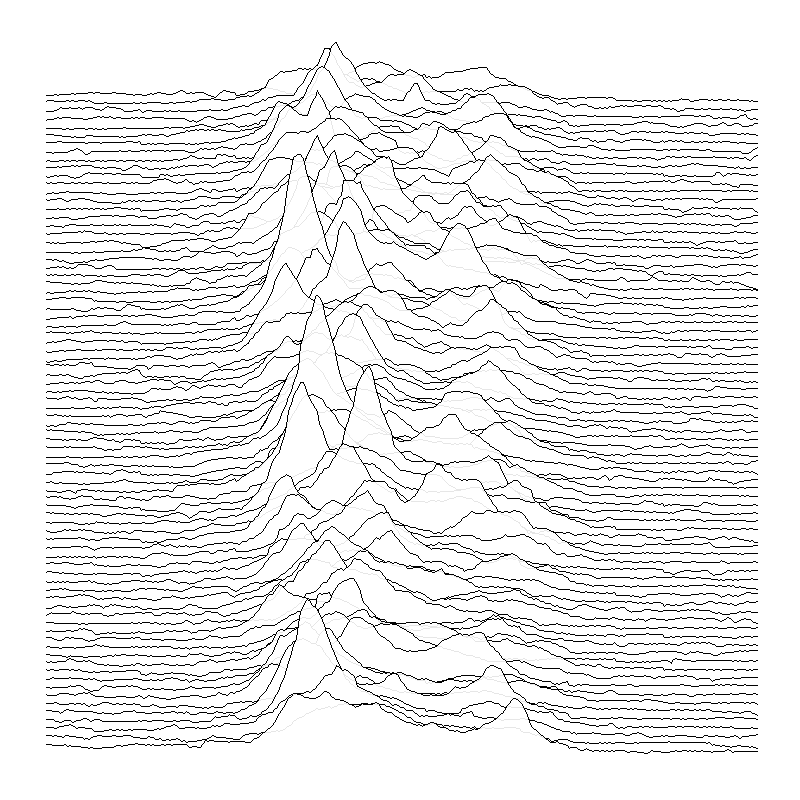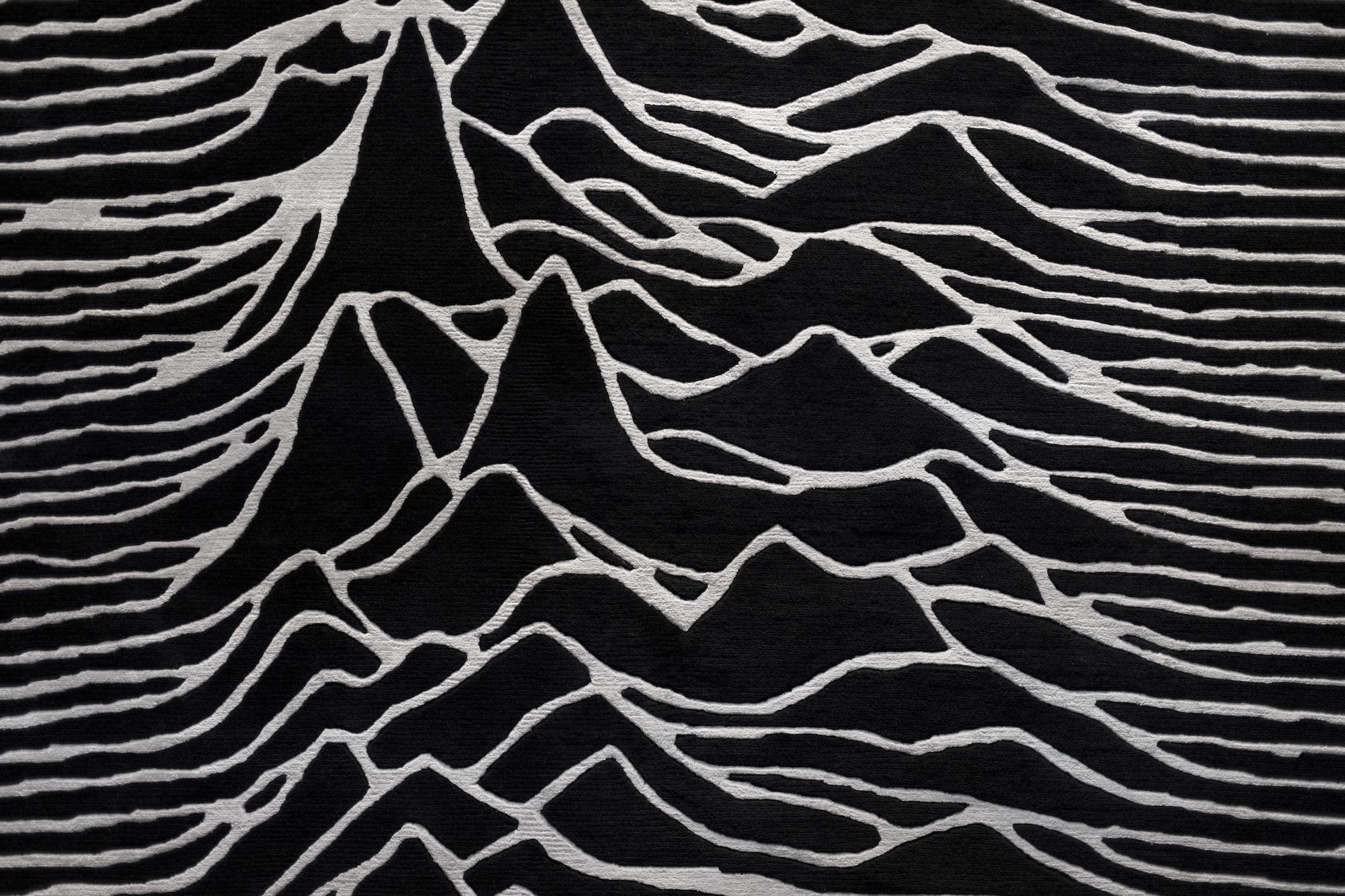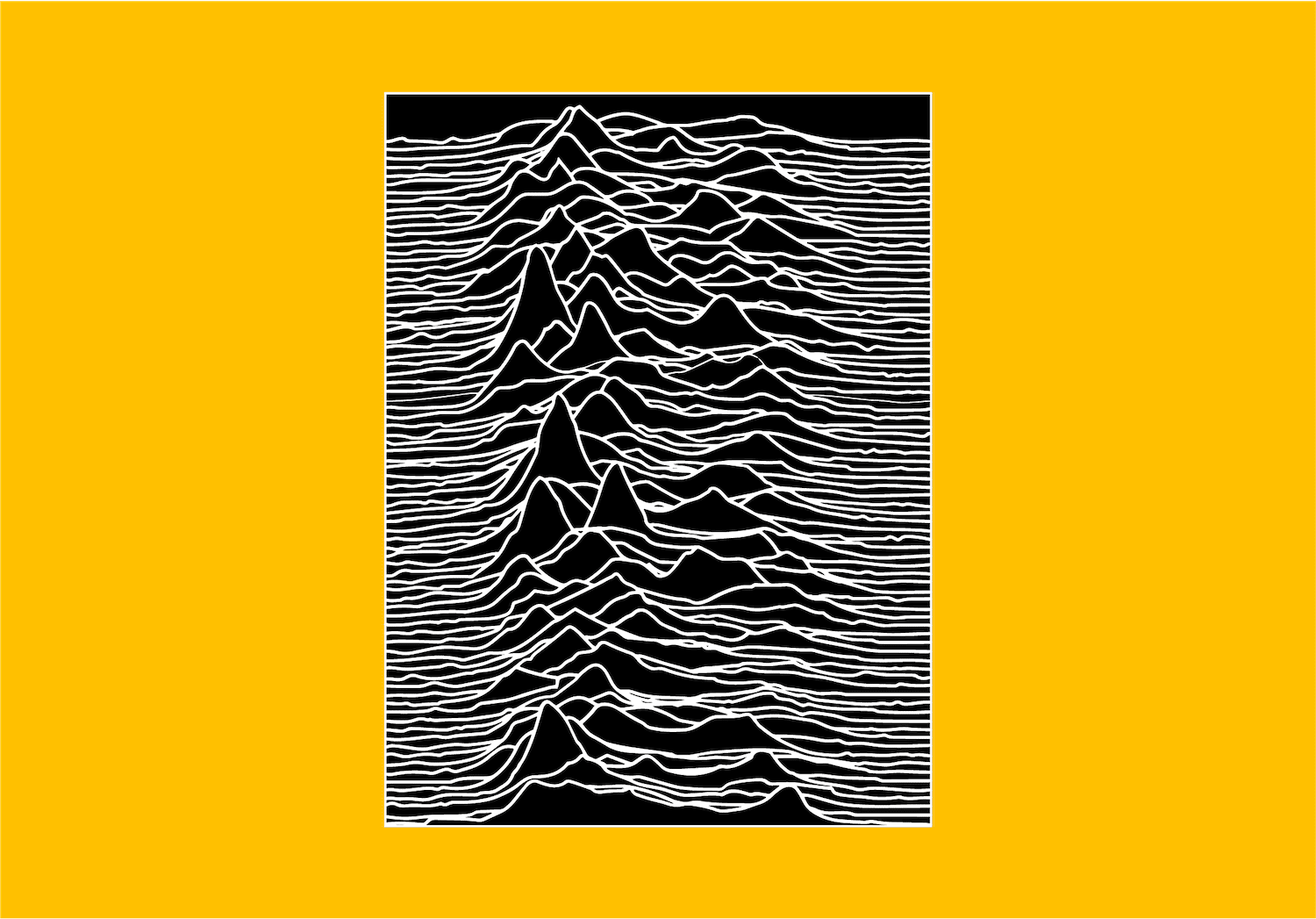While this graphic is cemented in music history as the cover image of Joy Division’s 1979 album “Unknown Pleasures” designed by Peter Saville, its origin lies in the early study of pulsar stars and the plotting of their signals by scientists at Arecibo Radio Observatory in Puerto Rico in 1970.
What you can see are “eighty successive periods of the first pulsar observed,” a star known as CP1919 (Cambridge pulsar at 19 hours 19 minutes right ascension).
The readings are plotted by a computer receiving radio signals and stacked on top of one another using the average period of 1.33730 seconds. This particular reading was taken by Harold D. Craft, Jr. and would go on to be published in several scientific journals shortly after before ending up in The Cambridge Encyclopaedia of Astronomy in 1977, which is where Joy Division drummer Stephen Morris discovered it. Morris and his bandmates insisted that Saville use it on their debut album cover, which he did – with no accompanying information.
The mystery of the image and its connection to Joy Division’s experimental music lead to it becoming iconic among alternative rock fans. It has since been interpreted in myriad ways, from tattoos to togas and everything in between.
Only with the dawn of the internet did enthusiasts gradually uncover the plotter reading’s true meaning and original author, all of which is expertly wrapped up by Jen Christiansen in her piece for Scientific American, “Pop Culture Pulsar: Origin Story of Joy Division’s Unknown Pleasures Album Cover.”
For us, its connection to scientific research and music history makes it an irresistible image to explore in a classical Tibetan knot – one of the oldest known mediums where an image transpires from being plotted on a grid.





